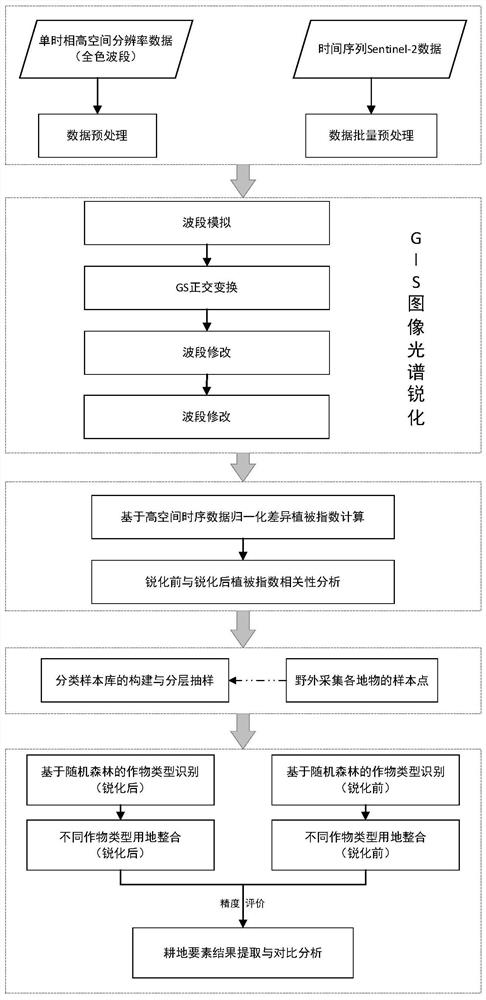A Time-Series Data Cultivated Land Extraction Method Based on Image Sharpening
A technology of time-series data and extraction methods, which is applied in image data processing, still image data retrieval, image enhancement, etc., can solve the problems of lack of high-spatial-resolution time-series data sets, blurred boundaries, and difficulty in temporal and spatial resolution of remote sensing data. Unification and other issues, to achieve the effect of fine recognition, improved granularity, and strong generalization ability
- Summary
- Abstract
- Description
- Claims
- Application Information
AI Technical Summary
Problems solved by technology
Method used
Image
Examples
Embodiment Construction
[0053] The present invention will be further described in detail below in conjunction with the accompanying drawings.
[0054] like figure 1 As shown, a method for extracting cultivated land based on time-series data of image sharpening provided by the present invention includes the following steps:
[0055] 1) Input single-phase high-spatial-resolution panchromatic band surface reflectance remote sensing images, and perform radiation correction, orthorectification, geometric registration and image cropping on the data; among them, single-temporal high-spatial-resolution panchromatic band Remote sensing images are four-band images with a spatial resolution of 1 meter or less, and the acquisition time must be within the annual cycle. Radiation correction is accomplished through the calibration coefficients of different sensors; orthorectification is assisted by global 30-meter digital elevation model data; geometric registration needs to be based on high-resolution non-offset ...
PUM
 Login to View More
Login to View More Abstract
Description
Claims
Application Information
 Login to View More
Login to View More - R&D
- Intellectual Property
- Life Sciences
- Materials
- Tech Scout
- Unparalleled Data Quality
- Higher Quality Content
- 60% Fewer Hallucinations
Browse by: Latest US Patents, China's latest patents, Technical Efficacy Thesaurus, Application Domain, Technology Topic, Popular Technical Reports.
© 2025 PatSnap. All rights reserved.Legal|Privacy policy|Modern Slavery Act Transparency Statement|Sitemap|About US| Contact US: help@patsnap.com



